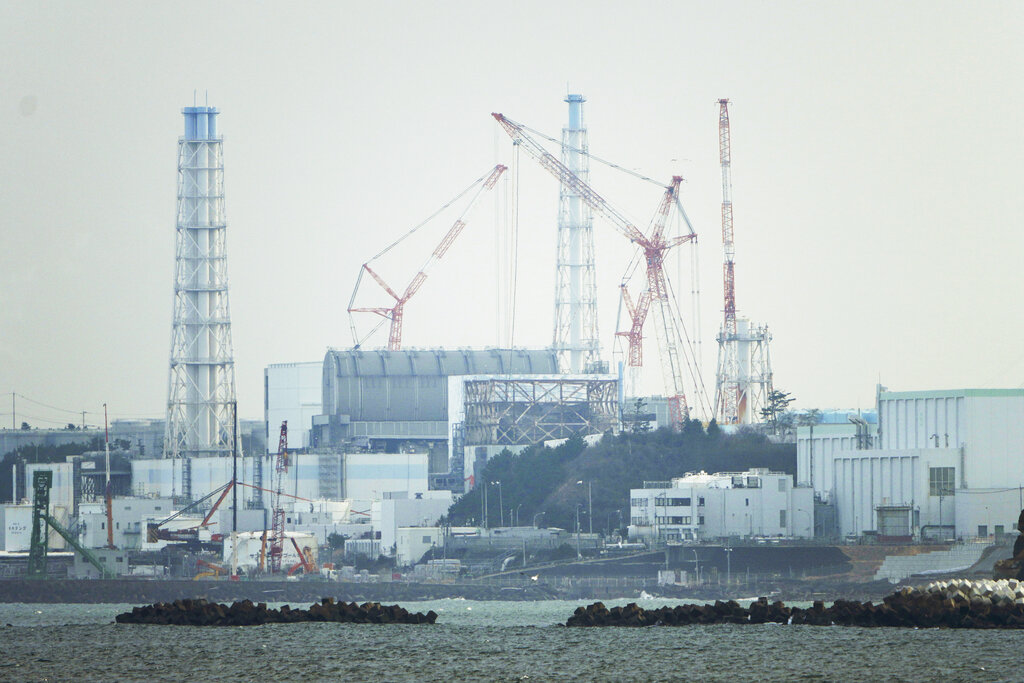Seoul Skeptical as Japan Eyes Release of Contaminated Water From Nuclear Plant
Japan wants to release more than a million tons of water from the plant, and Koreans fear Japan is poisoning the seas. To prove them wrong, the Japanese are showing a 21-member team of South Koreans what they are doing and why.

Summertime’s coming and the fish are jumping off eastern Japan where the nuclear power plant at Fukushima melted down more than 12 years ago after a tsunami inundated the region in the wake of a 9.0 earthquake.
One can even go swimming on beaches up and down the coast 180 miles north of Tokyo, the Japanese assure skeptics, without worrying about the radiation that forced evacuation of much of the area and raised concerns about whether the fish were edible.
Now, the Japanese want to release more than a million tons of water from the plant, and Koreans fear Japan is contaminating the seas. To prove them wrong, the Japanese are showing a 21-member team of South Korean experts what they are doing and why.
The Tokyo Electric Power Company, which owns the plant, joined officials from Japan’s Nuclear Regulation Authority for four hours of “in-depth technical discussions” plus two days of showing around the somewhat skeptical Koreans.
It was the first time that “independent” South Koreans had had such a tour, and it was all because the leaders of South Korea and Japan have been getting along so famously of late.
Just to stop the carping in the South Korean press, and by opposition politicians, President Yoon and Prime Minister Kishida decided now was the time to show them what’s really going on.
It’s not as though engineers will be pumping the water into the sea all at once, Japanese officials said. The whole process may take 40 years, but scientists think it’s absolutely necessary.
“Three nuclear reactors at the Fukushima plant suffered meltdowns in the wake of an earthquake and tsunami on 11 March 2011,” Dennis Normile explained in Science Magazine. “Molten fuel debris burned through steel containment vessels and into the concrete bases of the reactor buildings.”

Ever since, “workers have pumped water through the ruins to prevent the debris from overheating and causing further damage.” Contaminated water now fills more than 1,000 storage tanks.
It may be difficult, though, to convince some of the Koreans, always eager to find reasons to add to their litany of complaints about Japan, a legacy of Tokyo’s colonial rule over Korea between 1910 and 1945. The next phase of the process is likely to add fuel to Korean complaints.
The catch is the treatment does not wipe out the tritium, which Mr. Normile describes as “a radioactive isotope of hydrogen with a 12.3-year half-life that occurs naturally in trace amounts in seawater and the atmosphere” and is “extremely difficult to remove as it replaces hydrogen atoms in water molecules.”
Not to worry — much. “Because tritium emits only low-energy beta particles, it poses a modest health risk,” according to Mr. Normile. Now, “the plan is to dilute the water until the tritium concentration is one-fortieth of what Japan allows in drinking water.”
That’s not all, though. Besides tritium, “more dangerous isotopes with longer radioactive lifetimes, such as ruthenium, cobalt, strontium, and plutonium, sometimes slip through,” the article said, reporting TEPCO admitting “these additional nuclides are present in 71 percent of the tanks.”
Nonetheless, Nikkei, the English-language website of Japan’s financial newspaper, Nihon Keizai Shimbun, reports that plans for discharging the water, gradually, into the ocean “are moving forward at a rapid clip despite protests from local fishermen and communities.”
“The project’s success or failure,” Nikkei added, “could have wide-reaching effects on the country’s nuclear energy policy.” Japan has 54 nuclear power reactors but shut them down after the Fukushima meltdown. Since then, six have resumed production, which the Japanese believe is essential for a country that has to import all the oil needed for old-style power plants.
Meanwhile, the water’s fine. “The radioactive material from Fukushima,” according to a consulting firm that specializes in the maritime environment, Fishbio, “is a small signal that pales in comparison to the level of radioactivity that is naturally present in the ocean to begin with.”

